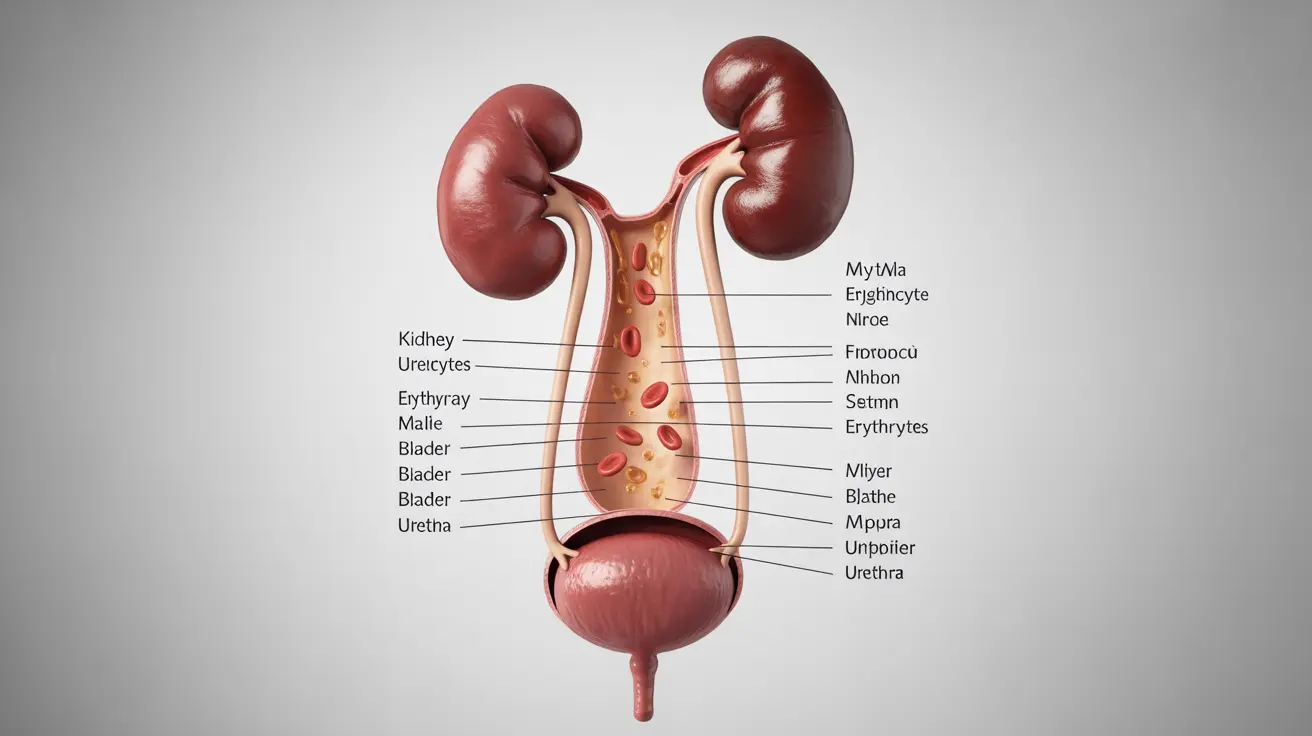Finding red blood cells (RBC) in your urine can be concerning, but understanding the causes and knowing when to seek medical attention is crucial for your health. While the presence of RBCs in urine, also known as hematuria, can sometimes indicate a serious condition, it may also have benign causes that are easily treatable.
This comprehensive guide will help you understand what it means to have red blood cells in your urine, how it's detected, and what steps you should take if you notice this condition.
Types of RBCs in Urine
Red blood cells in urine can present in two main ways:
Visible Hematuria
This occurs when there are enough red blood cells to change the color of your urine to pink, red, or cola-colored. This type is visible to the naked eye and should prompt immediate medical attention.
Microscopic Hematuria
In this case, the amount of blood is so small that it can only be detected through laboratory testing. You may not know you have this condition until it's discovered during routine screening.
Common Causes of RBCs in Urine
Urinary Tract Problems
Several conditions affecting the urinary system can lead to RBCs in urine:
- Urinary tract infections (UTIs)
- Kidney stones
- Bladder stones
- Enlarged prostate (in men)
- Bladder or kidney infections
Exercise-Related Causes
Sometimes, intense physical activity can lead to temporary appearance of RBCs in urine, known as "exercise hematuria." This typically resolves on its own within 24-48 hours.
Medical Conditions
More serious conditions that may cause RBCs in urine include:
- Kidney disease
- Bladder or kidney tumors
- Blood disorders
- Certain medications (especially blood thinners)
- Polycystic kidney disease
Diagnostic Procedures
When RBCs are detected in urine, doctors may perform several tests to determine the underlying cause:
- Urinalysis
- Blood tests
- Imaging studies (CT scan, ultrasound)
- Cystoscopy (when necessary)
Prevention and Management
While not all causes of RBCs in urine are preventable, certain steps can help reduce risk:
- Stay well-hydrated
- Practice good hygiene
- Complete prescribed antibiotics when treating UTIs
- Maintain a healthy weight
- Exercise moderately rather than intensely
Frequently Asked Questions
What are the common causes of red blood cells (RBC) in urine?
Common causes include urinary tract infections, kidney stones, enlarged prostate, intense exercise, certain medications, and various kidney or bladder conditions. Some causes are benign and temporary, while others may require medical attention.
How can I tell if blood in my urine is visible or only detected by tests?
Visible blood will make urine appear pink, red, or cola-colored. Microscopic blood can only be detected through laboratory testing and isn't visible to the naked eye. Both types should be evaluated by a healthcare provider.
What symptoms should prompt me to see a doctor if I have RBC in my urine?
Seek immediate medical attention if you notice visible blood in your urine, experience pain during urination, have lower back pain, or develop fever and chills. These symptoms could indicate a serious underlying condition requiring prompt treatment.
What tests do doctors use to diagnose the cause of blood in urine?
Doctors typically start with a urinalysis and may proceed with blood tests, imaging studies (such as CT scans or ultrasounds), and sometimes cystoscopy, depending on the suspected cause and other symptoms.
Can exercise, medications, or certain foods cause red blood cells to appear in urine?
Yes, intense exercise can cause temporary hematuria. Certain medications, particularly blood thinners, may increase the likelihood of RBCs in urine. Some foods, like beets, can change urine color but don't cause actual blood in the urine.




